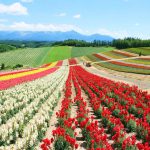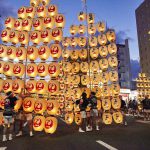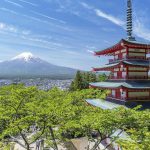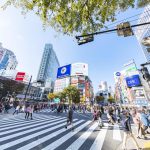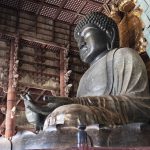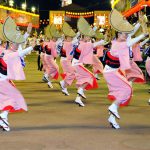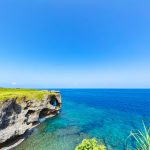Kyoto
With a long 1,200-year history, Kyoto is a beautiful and sophisticated ancient city with famous temples and shrines located throughout. It is the highlight destination of a trip to Japan, and there are many other attractions, including Japanese gardens; walking paths; beautiful nature; delicious food (including traditional Kyoto-style cuisine); charming inns; festivals; fine arts; and traditional crafts. The city is divided into five areas: Higashiyama, Rakuchu, Rakuhoku, Rakusai, and Rakunan, each of which requires sufficient time to explore and enjoy a leisurely stay; it is highly recommended that you prepare and plan your itinerary well in advance.
Higashiyama
Founded in 778, Kiyomizu-dera Temple is one of the most popular sites in Kyoto, with a main hall known as the “stage” (veranda) of Kiyomizu. Also on the premises are a three-story pagoda; Niomon Gate; Jojuin; and Otowa Waterfall, where visitors may drink the water, using a long-handled ladle.
The Ginkakuji Temple (Silver Pavilion) was built by Ashikaga Yoshimasa, the eighth shogun of the Muromachi Shogunate, following his grandfather, Yoshimitsu, who built the Kinkakuji Temple (Golden Pavilion). The Ginkaku is a two-story structure that reflects the Japanese aesthetic of wabi-sabi (philosophy of simplicity or understated elegance, and embracing imperfections) and withering beauty, consisting of the first floor of Shinkuden, which was used as a place to practice Zen meditation; and the second floor, called Choonkaku, where a statue of the Goddess of Mercy is enshrined. Also, worth seeing are the Togudo, which is said to be the prototype of a four-and-a-half-tatami tea ceremony room; the Ginshadan and Kogetsudai, the dry white sand garden; and the high hedge along the fence where you approach the temple.
The Gion Festival is a month-long festival in July that fills the air with the musical sounds of Gion, and is one of Kyoto’s most popular festivals. The highlight is the Yamaboko procession on July 17, when 32 gorgeous floats travel through the streets.
Rakuchu
Heian-kyo (former name of Kyoto) has been the capital of Japan for nearly 1,000 years, starting in 794. Some of the main streets of the old days have been maintained in the present city of Kyoto. When Heian-kyo was founded in the 8th century, Toji Temple was built on the east side of the main gate of the capital to protect the royal palace from natural disasters, plagues, and evil spirits. Toji Temple was built by Kobo Daishi (also known as Kukai), who studied esoteric Buddhism, the most advanced form of Buddhism at that time. The auditorium, displaying many Buddhist statues that date back to the temple’s establishment; the five-story pagoda, which is the largest ancient pagoda in Japan; and the Kondo (main hall) are all worth seeing.
Sanjusangendo was built in the 12th century, and is named after the 33 pillars of the main hall, which measures 120 meters long. The main hall, a national treasure, is home to 1,001 magnificent standing statues of the thousand-armed Goddess of Mercy. Not to be missed is the spectacle of the toshiya (archery exhibition), demonstrated under the eaves of the main hall, where the archers aim for a target that is positioned 120 meters away.
To appreciate works of art, the Kyoto National Museum is highly recommended. It features valuable exhibits of art, ceramics, picture scrolls, Buddhist paintings, and a variety of other paintings; it is located across from the Sanjusangendo. Also recommended is the Jotenkaku Museum of Art, located northeast of the main building of Shokokuji Temple, where paintings by Hasegawa Tohaku, Maruyama Okyo and Itoh Jakuchu are exhibited.
Stretching 390 meters long, Nishiki Market is popularly known as “Kyoto’s kitchen.” It has 120 shops, where you can find seasonal Kyoto products, vegetables, pickles, fresh fish, dried foods, tea, sushi, and Japanese confections. The market is crowded with locals and tourists alike, who enjoy browsing the stores, eating Kyoto’s local food, and picking out souvenirs, as they walk along the street.
Rakuhoku
Kifune Shrine has been a place of worship since ancient times, and was patronized by the imperial family. The God of Water is enshrined there, and is fervently worshipped by sake brewers and confectioners. Both sides of the stone steps leading to the shrine are beautifully lined with vermillion-lacquered lanterns. In the summer, a unique dining experience by riverside is highly recommended, where you can enjoy the local cuisine while seated on a tatami-matted terrace, overlooking the Kifune River.
Rakusai
Kinkakuji Temple (Golden Pavilion) was built at the end of the 14th century by Ashikaga Yoshimitsu, who was drawn to opulence and splendor. The center of the temple is a three-story wooden gilded structure with two or three layers of gold leaf, and a golden phoenix on the rooftop. The reflection of the Golden Pavilion in Kyokochi Pond is very impressive.
Arashiyama is a scenic area that displays the natural beauty of the mountains and rivers, where aristocrats were known to enjoy boating and viewing the autumn foliage during the Heian period. Recommended points of interest are the wooden Togetsukyo Bridge, which blends into nature with fresh greenery; cherry blossoms in the spring; the colorful autumn foliage; the forest trails that lead you to green bamboos growing so high that they cover the sky; and Tenryuji Temple, with its Japanese garden built in 1339 that incorporates the grandeur and grace of nature. In addition, the Mifune Festival is held in Arashiyama, every year in May. The event is a lively re-creation of the boating parties of the aristocrats of the Heian period.
Saihoji Temple, also known as the Moss Temple, was founded in the 8th century by Gyoki, known as the creator of the Great Buddha in Nara, and was rebuilt in 1339 by Muso Soseki. It has an exceptionally beautiful garden covered with more than 120 species of moss, where visitors can enjoy the beauty of the four seasons, such as the fresh green, rainy season, and the turning of the autumn leaves.
Sekitei is defined as a garden made of rocks, stones, and sands, without the use of trees. The most famous sekitei is the Ryoanji Stone Garden. It is said that the flat garden with 15 stones on the paved white sand expresses the state of Zen. There are also other wonderful stone gardens in Kyoto located at Daitokuji Temple, Shodenji Temple, Tofukuji Temple, and Nanzenji Temple.
Rakunan
Fushimi Inari Taisha, founded in 711, is the head of approximately 30,000 Inari shrines across the country. Located in the middle of Mt. Inari, the endless vermillion-lacquered torii tunnel of the Senbon Torii is a sight to behold. There are also many small shrines and mounds (for spiritual worship) scattered through the area, creating a sacred atmosphere. The view of Kyoto from Mt. Inari is also quite spectacular.
The Phoenix Hall in Byodoin Temple was built in 1053, in the late Heian period in the form of the Pure Land of Ultimate Bliss, as dreamed of by the aristocrats of the Heian period; it is a national treasure and World Heritage Site. The hall is famously known for being displayed on the Japanese 10-yen coin. The Byodoin Museum Hoshokan, located on the grounds of the temple, features national treasure Buddha statues and reproductions utilizing computer graphic images.


